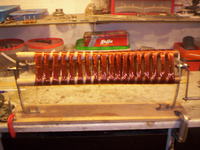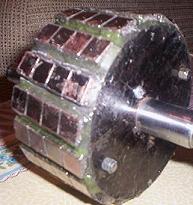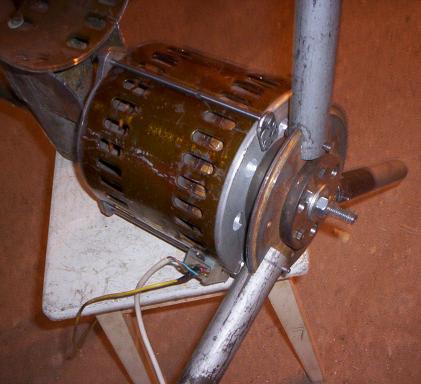nanadomi wrote: Hello, can you tell me how you wound the stator (wire thickness, number of turns, how to connect these coils), what neodyms you gave, what gap between the rotor and the stator and what power you pulled out at what speed, greetings
Wire frames are poured into the stator (first, they must be prepared, divided and arranged on the winder).

Any thickness of the wire can be poured into the grooves - to make it fully and evenly (comb) by pressing.
The coils do not need to be connected, only the entire stator with one wire without cutting and soldering - it pours in.
Neodymium - the bigger the better in the rhythm of frames of one phase, so that N and S alternate.
Power and speed are provided by the wind turbine as long as the wind allows, and the generator is very resistant to the mast.
In order to burn this winding, more than 10 A must flow through the Φ 1 mm wire and for a long period of time without cooling.
Calculating 3 phases x 10 A = 30 A. The voltage to withstand the wire insulation (lacquer) is 500 V. For this generator to burn, at least one condition must be met: 30 A without intensive cooling or 500 V.
In order to meet the limit requirements for combustion at the same time, the power of 30 A x 500 V = 15 kW is required.
I invite you to build generators at:
https://www.elektroda.pl/rtvforum/topic277125-8850.html Regards







